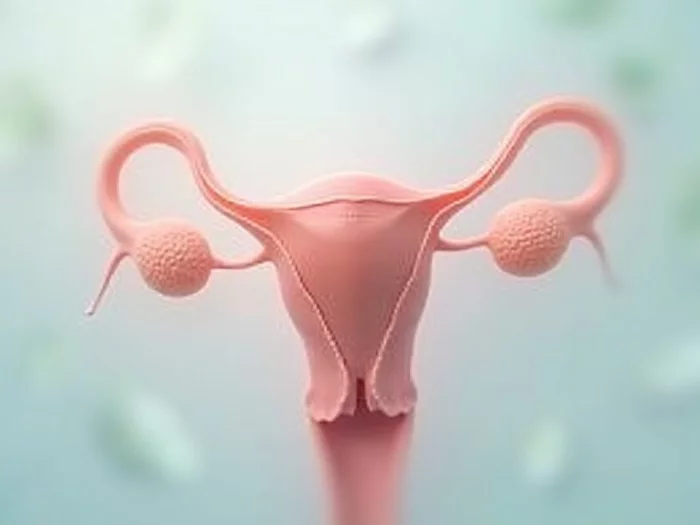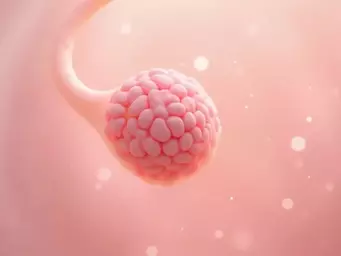Functional Cysts
- • Typically resolve on their own
- • Arise during menstrual cycle
- • Generally benign (e.g., follicular, corpus luteum)
Posted on: 2025-10-20
By: Edyta Drabek
Have you ever pondered how ovarian health can influence your overall well-being? Understanding ovarian cysts is more essential than you might think, given that they affect many women. Here’s a guide that unpacks the vital knowledge you need to navigate this common issue confidently.
This visual outlines the primary differences between functional and pathological ovarian cysts and highlights common risk factors, helping you understand their implications for women's health. For more detailed information, consider reading about essential women's health topics.
Ovarian cysts can seem daunting, especially when you're trying to make sense of your health. So, what exactly are ovarian cysts? Simply put, they are fluid-filled sacs that form on the ovaries. They are quite common, and while most are harmless, understanding the different types is crucial for your health journey. Differentiating between them can empower you to make informed decisions and find the right management strategies.
At Ovarian Cysts Wellness, we recognize the importance of this knowledge. When you can identify whether you have functional or pathological cysts, you can better navigate your treatment options. Remember, you’re not alone in this. Many women experience these challenges, and education is your greatest ally.
Ovarian cysts are categorized into two main types: functional and pathological. Functional cysts typically arise during the menstrual cycle and usually resolve on their own. In contrast, pathological cysts can develop due to other conditions and may require more attention.
By learning about the different types, you can recognize symptoms and seek timely help when needed. It’s all about taking charge of your health!
The distinction between functional and pathological cysts can have significant implications for your health. Functional cysts are typically benign, often causing little to no symptoms. In many cases, they resolve naturally, providing reassurance to those experiencing them.
However, pathological cysts may require further evaluation or treatment, as they can sometimes lead to complications. Being aware of the potential risks associated with these cysts can help you proactively manage your health. For further insights into managing complex gynecological conditions, explore resources on complex gynecological conditions.
While ovarian cysts can affect any woman, certain factors may increase your likelihood of developing them. Understanding these risk factors can help you take preventive steps. Here are some common ones:
By being aware of these risk factors, you can engage in proactive self-care and monitor your health more closely. Remember, taking charge is a key step towards wellness!
Have you ever experienced ovarian cysts? We would love to hear about your journey! Please take a moment to share your experience or thoughts:
When it comes to ovarian cysts, many women have questions that can lead to confusion and anxiety. I understand how daunting it can feel when faced with these concerns. In this section, I’ll address some frequently asked questions about ovarian cysts, so you feel informed and empowered in your health journey!
Many women wonder if functional cysts can turn cancerous. The good news is that functional cysts are typically benign and usually resolve on their own without intervention. However, it’s essential to differentiate them from pathological cysts, which can have a varying potential for malignancy. Regular check-ups with your healthcare provider can help ensure that any changes in your cysts are monitored closely.
Maintaining awareness of your body's changes and seeking medical advice when needed can help alleviate fears about cancer risks associated with ovarian cysts.
Identifying symptoms that indicate a need for medical attention is crucial. It's always better to err on the side of caution! Here are some symptoms that warrant a visit to your healthcare provider:
If you experience any of these symptoms, please don’t hesitate to reach out to a medical professional. Remember, your well-being is a priority.
Your lifestyle choices can play a significant role in managing ovarian health. Factors such as diet, exercise, and stress levels can influence the development and resolution of ovarian cysts. Here are some ways you can positively impact your health:
At Ovarian Cysts Wellness, I believe that nurturing your body through healthy lifestyle choices can empower you and enhance your overall well-being. You're not alone in this journey—small changes can lead to significant improvements! For more guidance on holistic health, consider exploring holistic wellness strategies.
It's essential to feel in control when dealing with ovarian cysts. Here, I’ll provide some guidance on managing your health effectively and knowing when to seek help. Remember, knowledge is power!
Understanding when to visit your doctor can make all the difference in your health journey. If you experience:
Don’t hesitate to reach out to a healthcare provider. It’s your right to advocate for your health!
Dealing with ovarian cysts can have emotional tolls, and having a strong support network is vital. Consider the following:
Building a support system can help you navigate the emotional landscape of managing ovarian cysts. Remember, you're not alone in this!
Your gynecologist plays an essential role in monitoring and managing your ovarian health. They can provide:
Feeling comfortable with your gynecologist is critical! Don’t hesitate to ask questions and share your concerns with them.
As we wrap up this section, I hope you feel more informed about ovarian cysts and equipped to manage your health. Remember, education and open communication with your healthcare provider are vital!
Understanding the differences between functional and pathological cysts is crucial for effective management. Regular monitoring can help identify any issues early on.
At Ovarian Cysts Wellness, we offer a wealth of resources to help you navigate your journey. From educational articles to community support, I’m here to help you prioritize your wellness! Learn more about managing PCOS naturally for related health information.
Here is a quick recap of the important points discussed in the article:

 Understanding ovarian cysts can feel overwhelming, especially if you're navigating discomfort on you
Understanding ovarian cysts can feel overwhelming, especially if you're navigating discomfort on you
 Building your personalized self-care kit can be a transformative experience, especially during chall
Building your personalized self-care kit can be a transformative experience, especially during chall
 Many women are unaware that ovarian cysts are a common issue, with many experiencing them at some po
Many women are unaware that ovarian cysts are a common issue, with many experiencing them at some po